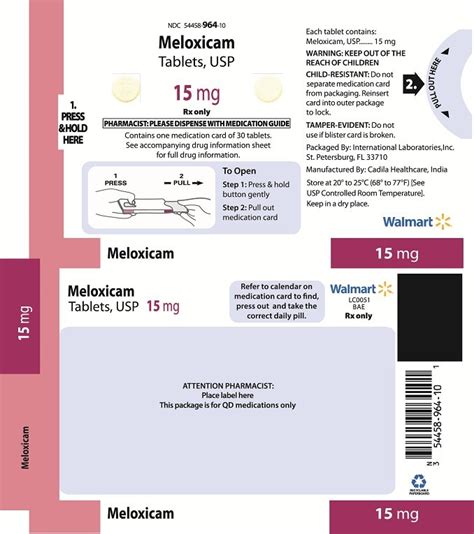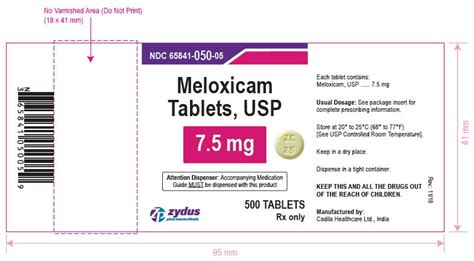Intro
Discover meloxicam uses and benefits for pain relief, inflammation reduction, and arthritis treatment, with its anti-inflammatory properties and NSAID benefits, providing relief from joint pain and swelling.
Meloxicam is a medication that has been widely used to treat various conditions, particularly those related to pain and inflammation. It is a nonsteroidal anti-inflammatory drug (NSAID) that works by blocking the production of certain natural substances that cause inflammation. The importance of understanding meloxicam uses and benefits cannot be overstated, as it is a commonly prescribed medication that can have a significant impact on the quality of life for individuals suffering from certain conditions. In this article, we will delve into the world of meloxicam, exploring its uses, benefits, and potential side effects, as well as providing practical examples and statistical data to support the information presented.
Meloxicam has been shown to be effective in treating a range of conditions, including osteoarthritis, rheumatoid arthritis, and ankylosing spondylitis. It is also used to treat juvenile rheumatoid arthritis in children over the age of 2. The medication works by reducing inflammation and pain, allowing individuals to perform daily activities with greater ease and comfort. Additionally, meloxicam has been used to treat other conditions, such as tendinitis and bursitis, which are characterized by inflammation and pain in the tendons and joints.
The benefits of meloxicam are numerous, and it is considered a valuable treatment option for individuals suffering from conditions that cause pain and inflammation. One of the primary benefits of meloxicam is its ability to reduce pain and inflammation, allowing individuals to maintain their independence and perform daily activities with greater ease. Additionally, meloxicam has been shown to be effective in reducing the risk of disability and improving the quality of life for individuals with conditions such as osteoarthritis and rheumatoid arthritis. With its proven track record of effectiveness and relatively low risk of side effects, meloxicam has become a popular choice among healthcare professionals and patients alike.
Meloxicam Mechanism of Action

Meloxicam Uses

Meloxicam Benefits
The benefits of meloxicam are numerous, and it is considered a valuable treatment option for individuals suffering from conditions that cause pain and inflammation. Some of the benefits of meloxicam include: * Reduced pain and inflammation: Meloxicam is effective in reducing pain and inflammation, allowing individuals to maintain their independence and perform daily activities with greater ease. * Improved quality of life: Meloxicam has been shown to improve the quality of life for individuals with conditions such as osteoarthritis and rheumatoid arthritis, reducing the risk of disability and improving overall well-being. * Reduced risk of side effects: Meloxicam has a relatively low risk of side effects compared to other NSAIDs, making it a popular choice among healthcare professionals and patients alike.Meloxicam Side Effects

Meloxicam Interactions
Meloxicam can interact with other medications, including: * Blood thinners: Meloxicam can increase the risk of bleeding when taken with blood thinners, such as warfarin. * Diuretics: Meloxicam can increase the risk of kidney problems when taken with diuretics, such as furosemide. * Beta blockers: Meloxicam can increase the risk of high blood pressure when taken with beta blockers, such as metoprolol.Meloxicam Dosage

Meloxicam Administration
Meloxicam is typically taken orally, once per day. It can be taken with or without food, but it is recommended to take it with food to reduce the risk of stomach upset. The medication should be taken at the same time each day to maintain a consistent level of meloxicam in the bloodstream.Meloxicam Precautions

Meloxicam Warnings
Meloxicam can cause serious side effects, including: * Stomach ulcers: Meloxicam can cause stomach ulcers, particularly in individuals who have a history of stomach problems. * Kidney problems: Meloxicam can cause kidney problems, particularly in individuals who have a history of kidney disease. * Liver problems: Meloxicam can cause liver problems, particularly in individuals who have a history of liver disease.What is meloxicam used for?
+Meloxicam is used to treat various conditions, including osteoarthritis, rheumatoid arthritis, and ankylosing spondylitis.
What are the benefits of meloxicam?
+The benefits of meloxicam include reduced pain and inflammation, improved quality of life, and reduced risk of side effects.
What are the common side effects of meloxicam?
+The common side effects of meloxicam include nausea and vomiting, diarrhea, abdominal pain, and headache.
In summary, meloxicam is a valuable treatment option for individuals suffering from conditions that cause pain and inflammation. Its benefits include reduced pain and inflammation, improved quality of life, and reduced risk of side effects. However, it is essential to use the medication with caution and follow the recommended dosage and administration guidelines to minimize the risk of side effects. If you have any questions or concerns about meloxicam, it is recommended to consult with a healthcare professional. We encourage you to share your thoughts and experiences with meloxicam in the comments section below and to share this article with others who may benefit from the information presented.
